- News
- Reviews
- Bikes
- Accessories
- Accessories - misc
- Computer mounts
- Bags
- Bar ends
- Bike bags & cases
- Bottle cages
- Bottles
- Cameras
- Car racks
- Child seats
- Computers
- Glasses
- GPS units
- Helmets
- Lights - front
- Lights - rear
- Lights - sets
- Locks
- Mirrors
- Mudguards
- Racks
- Pumps & CO2 inflators
- Puncture kits
- Reflectives
- Smart watches
- Stands and racks
- Trailers
- Clothing
- Components
- Bar tape & grips
- Bottom brackets
- Brake & gear cables
- Brake & STI levers
- Brake pads & spares
- Brakes
- Cassettes & freewheels
- Chains
- Chainsets & chainrings
- Derailleurs - front
- Derailleurs - rear
- Forks
- Gear levers & shifters
- Groupsets
- Handlebars & extensions
- Headsets
- Hubs
- Inner tubes
- Pedals
- Quick releases & skewers
- Saddles
- Seatposts
- Stems
- Wheels
- Tyres
- Health, fitness and nutrition
- Tools and workshop
- Miscellaneous
- Tubeless valves
- Buyers Guides
- Features
- Forum
- Recommends
- Podcast
review
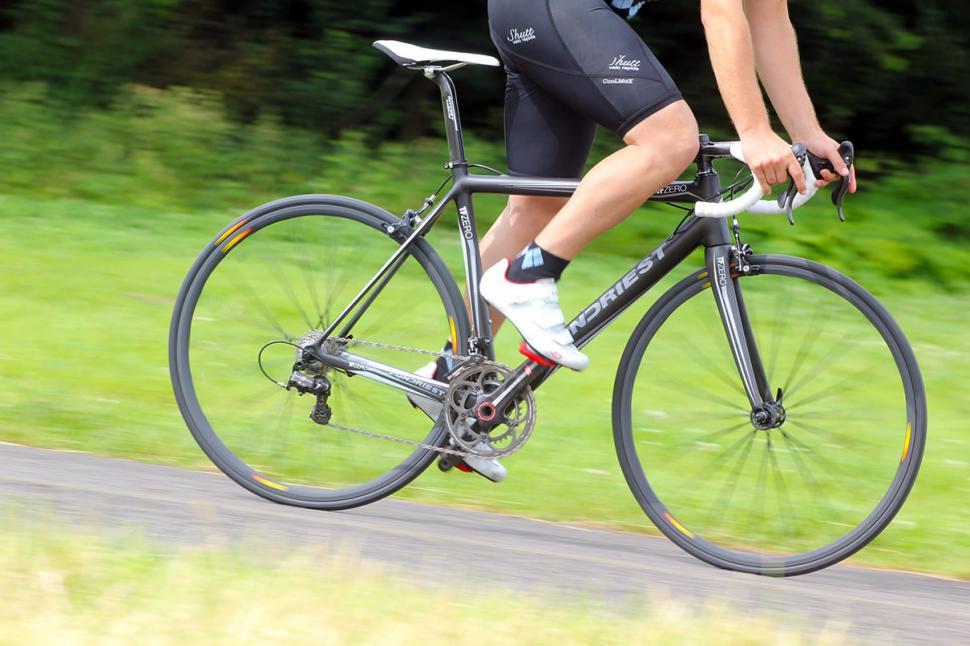 Fondriest TFZero - riding 1
Fondriest TFZero - riding 1£7,500.00
VERDICT:
It's a bold statement but, I reckon the TFZero is the current benchmark for top end carbon race frames
Weight:
6,560g
Contact:
www.impactct.co.uk
At road.cc every product is thoroughly tested for as long as it takes to get a proper insight into how well it works. Our reviewers are experienced cyclists that we trust to be objective. While we strive to ensure that opinions expressed are backed up by facts, reviews are by their nature an informed opinion, not a definitive verdict. We don't intentionally try to break anything (except locks) but we do try to look for weak points in any design. The overall score is not just an average of the other scores: it reflects both a product's function and value – with value determined by how a product compares with items of similar spec, quality, and price.
What the road.cc scores meanGood scores are more common than bad, because fortunately good products are more common than bad.
- Exceptional
- Excellent
- Very Good
- Good
- Quite good
- Average
- Not so good
- Poor
- Bad
- Appalling
If you've got some serious cash to spend on a hand built Italian carbon fibre superbike the usual suspects of Colnago, De Rosa et al are probably topping your list. But should the Fondriest TFZero be on there too?
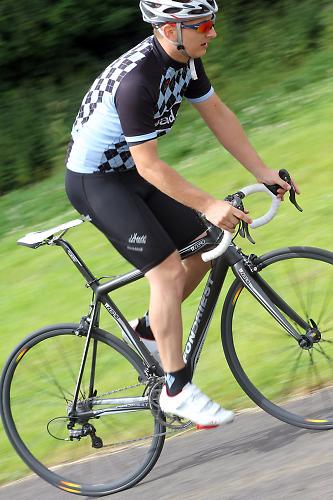
Frame/Fork
The TFZero is 100% handmade in Italy, from tube production through to the bonding of the frame itself in seven sizes (48-60cm) plus a full custom option.
In fact each frame is made to order so they're all pretty much custom built anyway. The manufacturing process is called 'tube to tube' meaning the tubes are cut to length, jigged up and then the joints are wrapped with more carbon. Once all this is done the frame is baked in an autoclave to cure the resin. It's a labour intensive method but gives full customisation rather than having to create many moulds as you would with a monocoque.
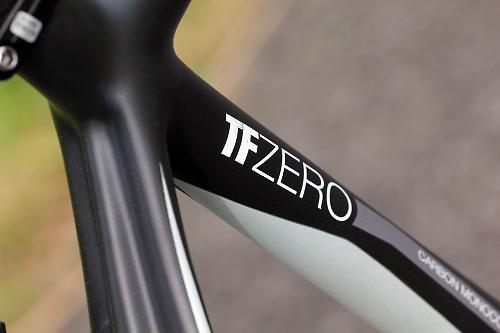
Low weight and high stiffness is the aim, and with a (claimed) raw frame weight of just 798g (medium) and stiffness levels of 40N/mm both boxes are pretty much ticked.
Places like the BB area, down tube and chain stays are all overbuilt to withstand the stresses and twisting forces applied through them once the bike is being used in anger.

In contrast the seat stays are a much thinner, flatter profile allowing some minimal flex for comfort and reducing weight.
Up front the head tube is tapered as we're seeing on most frames these days, from 1.125' to 1.25' to keep the front end stiff and tight under load. The carbon fork is a full monocoque and comes in at 340g.

It's the hills where the Fondriest really shines, as you'd expect with an all up weight of just 6.56kg (14.4lbs) sans pedals.
Climbing feels effortless thanks to the lightweight Mavic R-Sys wheels (we'll come to them later) and frameset but it's coming down the other side though that the fun begins.
The stiffness from the down tube, bottom bracket and chain stays keep the TFZero tracking beautiful while the slight shock absorbency at the seat stays keeps you in contact with the tarmac on rough surfaces.
My usual test descent is 50+mph with flowing bends and the Fondriest's steering was an absolute dream loading up perfectly as you shift your weight to clip one apex before banking over to clip the next.
With the frame being made to order there are plenty of choices to be made through the dealer before production goes ahead. You can have the frame set up for mechanical or electronic shifting (the cabling is internal whichever way you go), plus you can choose your BB preference – BB30 or BSA, English or Italian threaded.

The dropouts on both the frame and fork are carbon which gives the frame a flowing uninterrupted look. Alloy inserts are used to secure the wheel and when tightened the quick release never actually comes into contact with the carbon dropout.
A 1k carbon layer wrap finishes off the frame and fork and there is a choice of colours for the graphics as well. Well, you wouldn't want to paint it, would you - it'll add weight.
The Fondriest is really easy to live with and you can ride it day in day out with very little in the way of fatigue or niggles. I did back to back 80 milers over 3 days and each morning it didn't feel like I'd been on the bike the day before; pretty good for a race orientated frame.
The build

The frameset costs £3200 and at the point of ordering you can have it built up with a range of groupsets plus various wheel and finishing kit options.
Our test model was built up with Campagnolo's Super Record 11 speed which is their top tier mechanical group. The basic design of the top three groupsets is pretty much the same but Super Record uses plenty of carbon fibre and titanium to keep stiffness up and weight down.
The Super Record groupset is so light in operation it's more like riding an electronic system as it changes through the gears with just the slightest touch.

The chainset uses the Ultra Torque axle design which sees the drive and non drive side align midway through the BB shell creating a stiff and smooth running drivetrain. Weight is kept down by using hollow carbon cranks which thanks to their slim, elongated profile are very stiff while maintaining a narrow q-factor.
If I was speccing the TFZero for myself I'd opt for a standard 39/53 chainset as the compact here sees the 34 inner ring virtually redundant on all but the steepest of inclines.
Powerful braking is targeted from two angles with the levers themselves being carbon there should be no flex whatsoever under hard braking while Campag's skeleton brakes are among the top performers on the market.
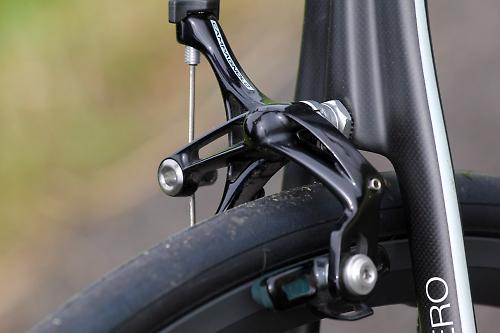
The Super Record jobbies have got a power differential front and rear which makes modulation easier and prevents the rear from locking up especially on bikes as light as the TFZero.
If things do go wrong the combination of these brakes (always a winner in my eyes) and Mavic's Exalith rim surface means that braking is quite simply phenomenal, wet or dry.
Admittedly the bedding in process eats the initial set of pads and they squeal like a pig but the stopping power and modulation means you can brake at the very last second without fear of looking up.
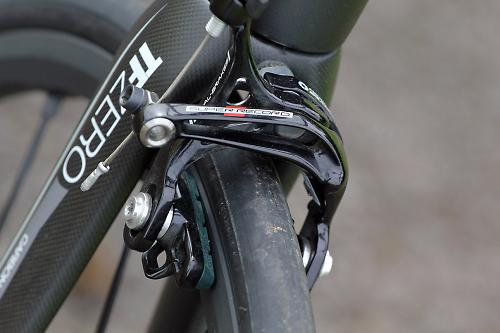
Both the mechs show large amounts of carbon for the bling factor. The rear has carbon cage plates and the upper and lower bodies are made predominantly out of the stuff. Ceramic bearings are found in the lower jockey wheel to reduce friction.
All in the groupset weighs less than 1900g so if you're going after the weight weenie build it's certainly a good place to start.
Wheels

The wheels are Mavic R-Sys SLR's which are sold as a wheel package containing tubeless tyres and pads. All three components are designed to work together for performance, aerodynamics and stopping power. The wheels are intended for climbing and at just 1370g (1960g inc. tyres) a pair you can see why.
Don't go thinking they are fragile though, they'll take just as much of a battering as the Aksiums or Ksyriums.
The tubs offer huge levels of grip wet or dry with a gradual break of traction as you reach the limit.
The non drive side rear spokes are carbon tubes using Mavic's TraComp technology and while there were some longevity issues with earlier wheels everything seems to be sorted now. Why carbon spokes? Well due to the very high traction resistance of the carbon fibre wheel deflection under load is hugely reduced and of course lightness.
The rest of the spokes are bladed and are made out of the same alloy as the rims. Both use a treatment called Exalith which coats and penetrates the alloy making it stronger and longer wearing, ideal for braking surfaces plus the dark coat makes the rims look pretty tasty.

On the flat the minimal rotating mass from the wheels means the acceleration is rapid and even with Super Record's ability to jump three sprockets at a time you'll still be struggling to keep up.
Once up to cruising speed the TFZero will happily stay there with very little input and the geometry of our size medium allows for a decent saddle to bar drop to get aero while being comfortable.
Finishing kit
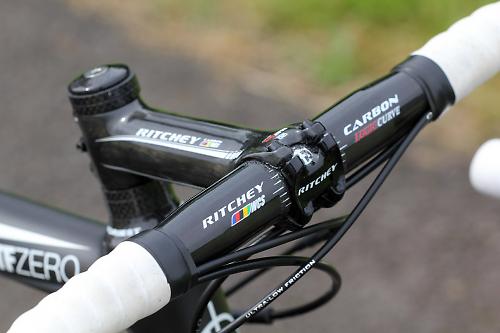
The finishing kit is all from Ritchey's WCS carbon range and very nice it is to. We've seen these on quite a few test bikes in the past and they always perform well. The steerer clamp uses 3 bolts to tighten while up front the bolts are angled allowing for 260° coverage of the handlebars rather than the usual 180°.
Perched atop the Ritchey seatpost is Selle Italia's SLR XC Flow saddle. The SLR is always a favourite of mine so it's always a pleasure to see one adorning a test bike. The Flow has the cut-out to remove pressure from your bits and the Vanox rails are light and strong.
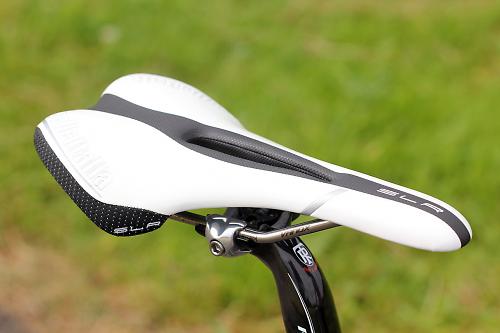
A little bit of flex in the bars takes away any vibration from the road yet sprint in the drops and you won't feel them move at all. I found the SLR saddle bedded in straight away and certainly gave me no issues.
Ride

So, have Fondriest managed to achieve the holy grail of bike design – light, stiff and comfortable? In a word, yes. Admittedly it's going to cost you but the TFZero is as close to perfection as any bike I have ever ridden.
It's not just fast in a sprint or fast up a climb - the TFZero is fast everywhere.
Initially it's not as engaging to ride as a titanium, steel or aluminium frame. In fact, swapping straight from the zingy alloy De Rosa Milanino the TFZero felt a little muted and numb but the fact of the matter is the Fondriest is ruthlessly efficient swallowing up mile after mile with little fuss or drama. Give the pedals a kick in anger though and the TFZero comes alive.
You push it a little bit harder, then a bit harder, then harder still before you realise how far away you were from the bike's limits in the first place.

If it was my choice I'd easily take TFZero over the Colnago C59 which is a huge compliment considering what a great bike the Colnago is. The Fondriest just does everything a little bit better though - the old marginal gains theory.
It's slightly tighter in the bends, slightly more shock absorbent, it gives a little bit more feedback and responds just that split second sooner... this all adds up over the course of a ride.
The fact that you never really need to slow down as it'll take corners and roundabouts flat out means you can keep your average speed up by a huge amount, plus if you do have to slow, the acceleration sees you straight back up to speed within seconds.
At around £7.5k for this build it's a massive outlay but it's set the benchmark so high that this bike is going to be at the top end performance wise for a fair few years yet. Think of it as a long term investment.
Verdict
It's a bold statement but, I reckon the TFZero is the current benchmark for top end carbon race frames.
road.cc test report
Make and model: Fondriest TFZero
Size tested: 54cm
About the bike
State the frame and fork material and method of construction. List the components used to build up the bike.
Toray T42 Tube to tube carbon fibre construction for the frame. The tubes are cut to length, placed in a jig before being bonded. Layers of carbon are then wrapped around the joints for strength before being back in an autoclave.
The fork is a monocoque construction.
Tell us what the bike is for, and who it's aimed at. What do the manufacturers say about it? How does that compare to your own feelings about the bike?
Its a race machine but its perfectly at home on the club run or sportives.
Frame and fork
Overall rating for frame and fork
9/10
Tell us about the build quality and finish of the frame and fork?
The frame is beautifully finished and crafted. The top layer of 1k carbon is smooth without blemish.
Tell us about the materials used in the frame and fork?
Top end carbon fibre giving high strength for low weight.
Tell us about the geometry of the frame and fork?
Steep angles and a short rear end keep things tight and responsive.
More here
How was the bike in terms of height and reach? How did it compare to other bikes of the same stated size?
The medium had a 530mm seat tube and a 550mm toptube which increases by 10 to 15mm increments between sizes.
Riding the bike
Was the bike comfortable to ride? Tell us how you felt about the ride quality.
Very, considering how stiff the frame is it's quite a party piece.
Did the bike feel stiff in the right places? Did any part of the bike feel too stiff or too flexible?
Yes, its spot on in terms of responsiveness and feedback
How did the bike transfer power? Did it feel efficient?
Yes, accelaration is truly amazing
Was there any toe-clip overlap with the front wheel? If so, was it a problem?
No.
How would you describe the steering? Was it lively, neutral or unresponsive? Lively.
Tell us some more about the handling. How did the bike feel overall? Did it do particular things well or badly?
Everything feels tight and responsive. The handling seems to react to speed feeling lively and quick at speed without feeling twitchy when you slow up. The TFZero is one of the most engaging rides out there.
Which components had the most effect (good or bad) on the bike's comfort? would you recommend any changes?
The saddle and the Ritchey components soak up a lot of the imperfections while the frame has some great damping properties in terms of the rear seatstays.
Which components had the most effect (good or bad) on the bike's stiffness? would you recommend any changes?
Everything works together as a package and I wouldn't change a thing.
Which components had the most effect (good or bad) on the bike's efficiency? would you recommend any changes?
The lightweight Mavic wheels means maintaining a high average speed is relatively easy. Above 25mph though you do notice the lack of aero benefit from the shallow rims.
Rate the bike for efficiency of power transfer:
10/10
Rate the bike for acceleration:
10/10
Rate the bike for sprinting:
9/10
Rate the bike for high speed stability:
10/10
Rate the bike for cruising speed stability:
9/10
Rate the bike for low speed stability:
9/10
Rate the bike for flat cornering:
9/10
Rate the bike for cornering on descents:
10/10
Rate the bike for climbing:
9/10
The drivetrain
Rate the drivetrain for performance:
9/10
Rate the drivetrain for durability:
8/10
Rate the drivetrain for weight:
9/10
Rate the drivetrain for value:
7/10
Wheels and tyres
Rate the wheels and tyres for performance:
9/10
Rate the wheels and tyres for durability:
9/10
Rate the wheels and tyres for weight:
9/10
Rate the wheels and tyres for comfort:
8/10
Rate the wheels and tyres for value:
8/10
Tell us some more about the wheels and tyres.Did they work well in the conditions you encountered? Would you change the wheels or tyres? If so, what for?
The R-SYS SLR wheels are great, they seem to take rough surfaces well and roll very smooth at the hubs. The tyres grip really well in both wet and dry and no signs of cuts or punctures.
Controls
Rate the controls for performance:
9/10
Rate the controls for durability:
8/10
Rate the controls for weight:
8/10
Rate the controls for comfort:
9/10
Rate the controls for value:
8/10
Tell us some more about the controls. Any particularly good or bad components? How would the controls work for larger or smaller riders?
The bars stem and seatpost all worked well and are easy to set up. Crash damage is always a worry with carbon components so a spill could prove costly.
Your summary
Did you enjoy riding the bike? Yes.
Would you consider buying the bike? Yes.
Would you recommend the bike to a friend? Yes.
Rate the bike overall for performance:
10/10
Rate the bike overall for value:
8/10
About the tester
Age: 34 Height: 180cm Weight: 78kg
I usually ride: Genesis Flyer My best bike is: Ribble Gran Fondo
I've been riding for: 10-20 years I ride: Every day I would class myself as: Expert
I regularly do the following types of riding: time trialling, commuting, club rides, sportives, fixed/singlespeed,
Since writing his first bike review for road.cc back in early 2009 senior product reviewer Stu has tested more than a thousand pieces of kit, and hundreds of bikes.
With an HND in mechanical engineering and previous roles as a CNC programmer/machinist, draughtsman and development engineer (working in new product design) Stu understands what it takes to bring a product to market. A mix of that knowledge combined with his love of road and gravel cycling puts him in the ideal position to put the latest kit through its paces.
He first made the switch to road cycling in 1999, primarily for fitness, but it didn’t take long for his competitive side to take over which led to around ten years as a time triallist and some pretty decent results. These days though riding is more about escapism, keeping the weight off and just enjoying the fact that he gets to ride the latest technology as part of his day job.
Latest Comments
- Kapelmuur 10 min 27 sec ago
About 12 years ago I was unable to continue running because of persistent injuries so I was wondering what endurance activity could be a viable...
- mattw 30 min 50 sec ago
Not worth the energy to hate....
- Johnny Rags 1 hour 1 min ago
Wouldn't generalisations about generations be, I don't know, "generationalisations"?
- ErnieC 2 hours 4 min ago
No chance of that ever being a human being.
- Rome73 2 hours 48 min ago
I'm sorry I don't accept that the majority of cyclists are 'psychopaths'. There are some 'nutters' out there - but I would hazard a guess that most...
- Rik Mayals underpants 18 hours 18 min ago
Here's my cycling related Christmas gift. Beautiful enamel garage sign to go above my Campagnolo Super Record RS equipped Colnago.
- Rendel Harris 22 hours 26 min ago
No idea if Cancellara was using a motor or not, I hope not as I greatly enjoyed him as a rider, but the tech was certainly available, I can...
- SecretSam 1 day 1 hour ago
Usual ugly Pinarello, bumps and curves where they aren't needed. And, according to Mapdec, not well built.
- Spangly Shiny 1 day 23 hours ago
I had the pleasure of owning two of the featured builders here, in my history. When I joined the Army in 1971, I took with me my curly Hetchins:...
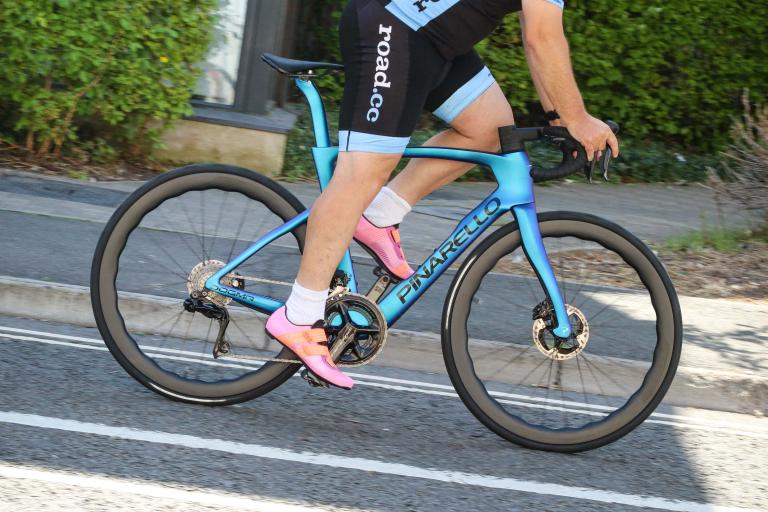

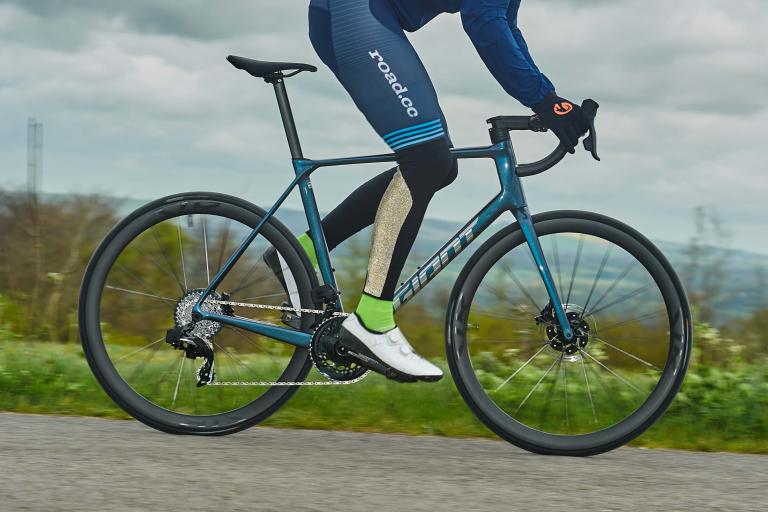

Add new comment
9 comments
I was watching a couple of GCN videos top with top end bike vs £100 bike and 105 spec bike vs top end bike. In a climb, the top end bike was 10% faster than the £100 one. Wow.....that's 10% in pro level hands, I'd imagine the difference would be less for average joe.
The more shocking one was against the 105 bike. Top end bike 9.45, 105 bike 9.55. So basically a few grand for 10s in 10 minutes of climbing.
To anyone thinking there's little difference between a daily driver and a top flight bike, and why spend the money, I'd suggest trying some out at an open day.
I bought a secondhand Oltre XR last year and am still amazed at the ride quality, flowing, reassuring and tremendously stiff. Cornering is remarkable. It's quite different to my daily non-HM Supersix Evo. Part of that is tubs vs. clinchers but I've swapped wheels and it's still there.
So, try a top bike and think about getting a secondhand one from a reliable previous owner
I can dream......
£7500 yeah thats alot of cash for a bicycle but if you got it laying around and you fancy one go get it, just don't get dropped by that old dude on his steel tourer 30 miles in.
I'm not sure that's neccesarily all that relative.
It will, no doubt, be incrementally faster than a £1k bike.
But I doubt it will be any faster or more comfortable than say a Canyon SLX 2013.
Or even 2 Canyon SLX 2013's.
its all relative though isnt it? i dont have that cash to blow but some households have 5-6k a month to play with.
i personally wouldnt buy this bike if i had the cash. i would happily buy super record eps and some cosmic slrs and stick them on my caad10 or a condor steel frame.
cycling is a sport where you can buy the top of the top kit for relatively small money.
equivelants -
super car, £100'000 vs normal car £15'000
mansion , 2-3 million vs 2 door semi £150,000
superroadbike £8000 vs average road bike £1000
super camera £12'000 vs panasonic lumix £140
in % terms its far more obtainable for people than the other examples.
bikes are my 'king for a day' items mine is 'only' worth about 2K but its the most expensive thing i own and it makes me happy
Well said! Perspective is everything.
It's £7500.
That's nearly £8000.
Ask yourself seriously if that is a sensible amount to spend on a bicycle, especially one to race with. Then have a serious word with yourself.
It may well be lovely, it may well be beautiful, it may well be a nice bike, but it's just a bike. Get in a crash in a race and it may well be toast.
Honestly a sense of perspective would be a wonderful thing....
..... actually if anything it's closer to £7000......